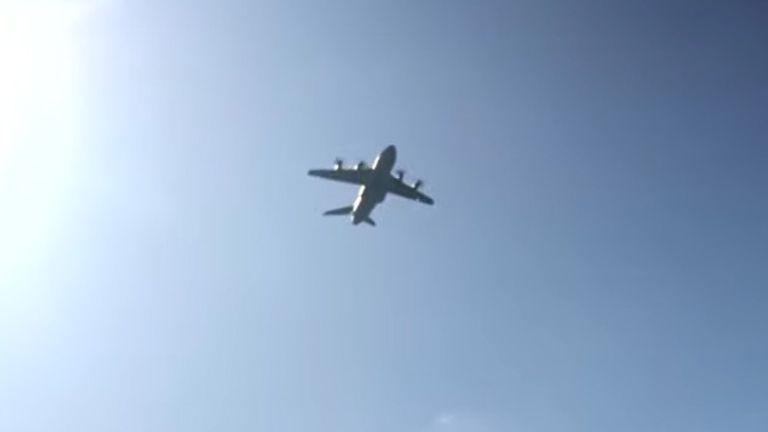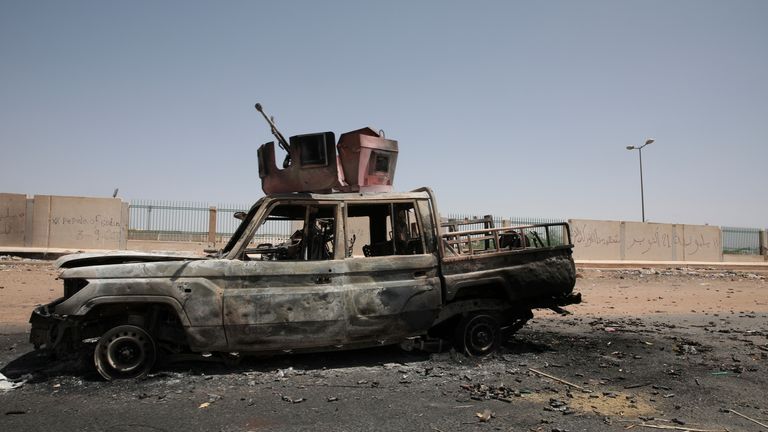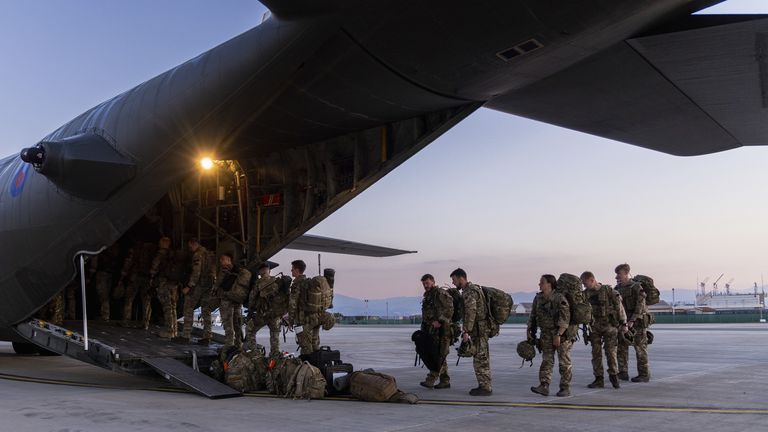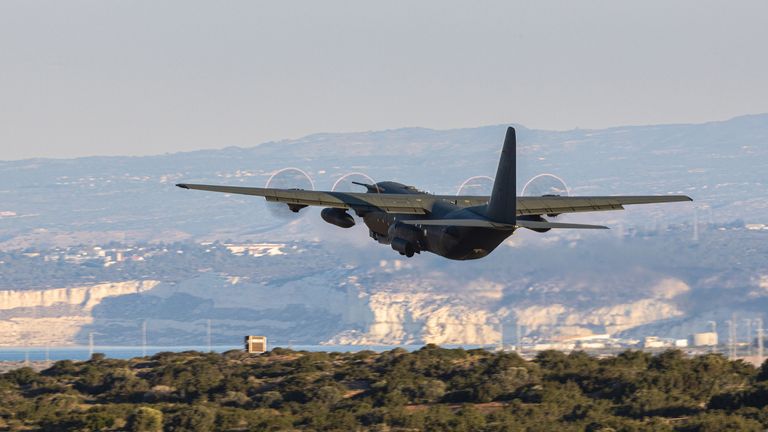There are two main risks for the UK’s mission to evacuate thousands of British passport-holders out of Sudan: the fighting and the logistics.
The two warring factions in the country have agreed on a three-day ceasefire but previous truces have faltered, meaning the capital, Khartoum, remains incredibly volatile and dangerous.
The UK will be operating from a Sudanese military airfield to the north of the city – the same one that was used to rescue British diplomats and their families over the weekend. The French armed forces are understood to have helped secure the Wadi Seidna airstrip and have been using it to rescue their people and other EU nationals as well.
Despite being in a relatively safe location, there are still threats.
The Royal Air Force transport planes – a C-130 Hercules and an Airbus A400M – are still entering the airspace of a conflict zone, which means potential exposure to gunfire or even missiles.
The UK, France and other foreign nations conducting evacuations are not engaged in the fighting so should not be targeted.
But there is always the possibility of a mistake, a miscalculation, or a deliberate attack given the chaos and unpredictability on the ground.
The biggest danger, though, will be for the British nationals who must make their own way from their homes in Khartoum to the airfield, about 20 miles (30km) away.
The city has been a warzone for almost two weeks. Hundreds of people have died.
Checkpoints fill the streets, with rival soldiers and paramilitaries in different sections.
Navigating checkpoints will be perilous
The two generals at the heart of the fighting may have agreed to a temporary ceasefire but if that instruction has yet to filter down to all the young, armed men on the ground, there could yet be fighting.
Navigating checkpoints even during a fragile truce will be perilous.
The UK government is giving priority to the most vulnerable – children, the elderly, the sick and the wounded. But these are the people who will find it hardest to make the journey.
There is the option for British forces to enter Khartoum and help extract people.
But this would be an incredibly high-risk move – putting armed British troops into an active combat zone.
A group of elite British soldiers inserted themselves into the capital late on Saturday night to rescue the British diplomats. They successfully drove them to the airfield.
However, a team of French special forces, conducting the same kind of operation for their diplomats, came under fire as they left the French embassy, with one soldier wounded.
Read more:
Ceasefire under way in Sudan as UK government issued warning
Irish mother who escaped Sudan ‘heartbroken’ as husband left behind
The Foreign Commonwealth and Development Office will be hoping civilians will manage to make their own way to the aircraft as – while still risky – that will be less dangerous than sending British troops in to shepherd them out.
Efforts will also need to be taken to avoid a mad scramble by the many other residents of Khartoum who also want to flee.
The UK will surely be mindful of the horrendous scenes outside Kabul airport in Afghanistan in the summer of 2021 when thousands of desperate Afghans gathered outside the gates – trying to force their way onto international evacuation flights.
The situation in Sudan is very different and the airfield is outside the city so access to it will probably be easier to control.
The 16 Air Assault Brigade, the Royal Marines and the RAF are involved in the evacuation effort – they were the units named by Ben Wallace, the defence secretary, over the weekend.
The 16 Air Assault Brigade is the army’s highest readiness unit of airborne combat troops. Their job is to be permanently on standby to mobilise in a crisis. Soldiers from this brigade led the Kabul evacuation.
How UK evacuees will flee
Then – in Sudan – there is the logistical challenge.
Unlike the US and France, the UK does not have a military base in the region.
Instead, the armed forces are operating out of RAF Akrotiri, a Royal Air Force base in Cyprus, more than 2,000km from Khartoum.
The UK will be using its C-130 Hercules transport plane – a much-cherished and reliable aircraft, perfect for operating in austere and dangerous environments but which is going out of service next month to save money – and the newer Airbus A400M for the airlifts.
All military aircraft are prone to technical issues so this will be something the RAF and its engineers will be working hard to prevent.
Another option for the UK is to transport British nationals by ship from a port in the east of the country.
A team of soldiers flew into Port Sudan on Monday on a reconnaissance mission and a Royal Navy frigate, HMS Lancaster, is in the region and ready to move forward if needed to assist.
However, British nationals will need to make the more-than-500-mile journey from Khartoum to the Red Sea port.
It’s a route that takes 13 hours in normal times by car but is now thought to take up to 40 hours because of checkpoints, congestion and – most critically – the need to source petrol along the way.
























